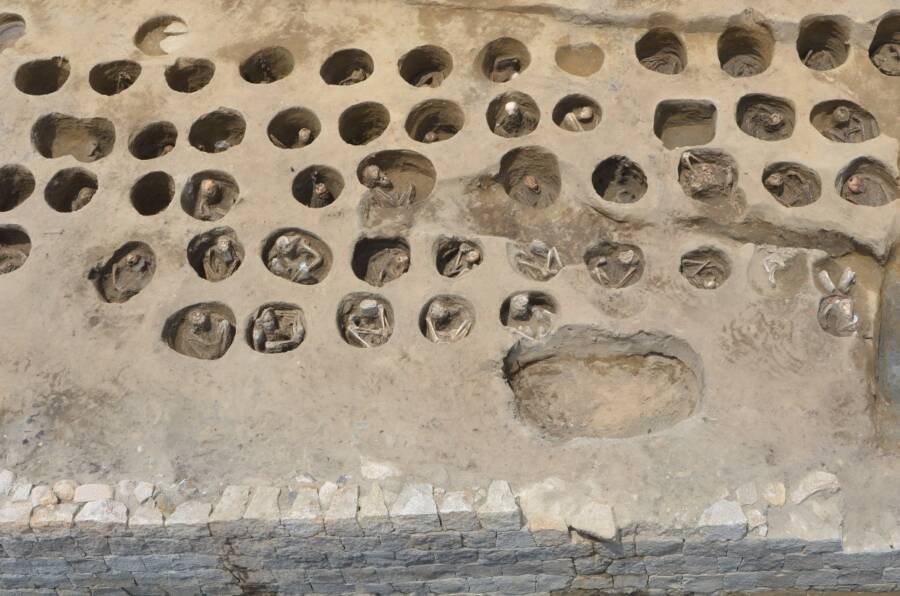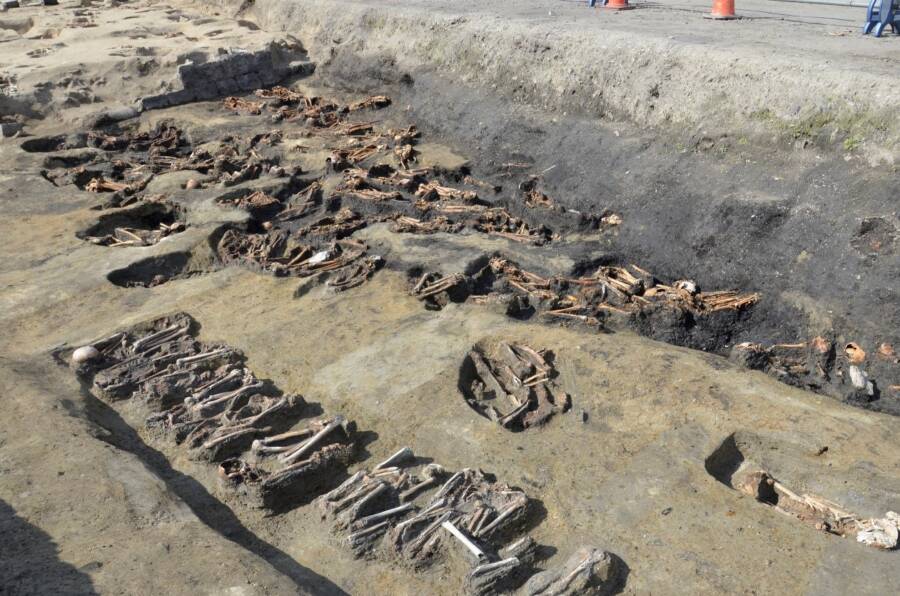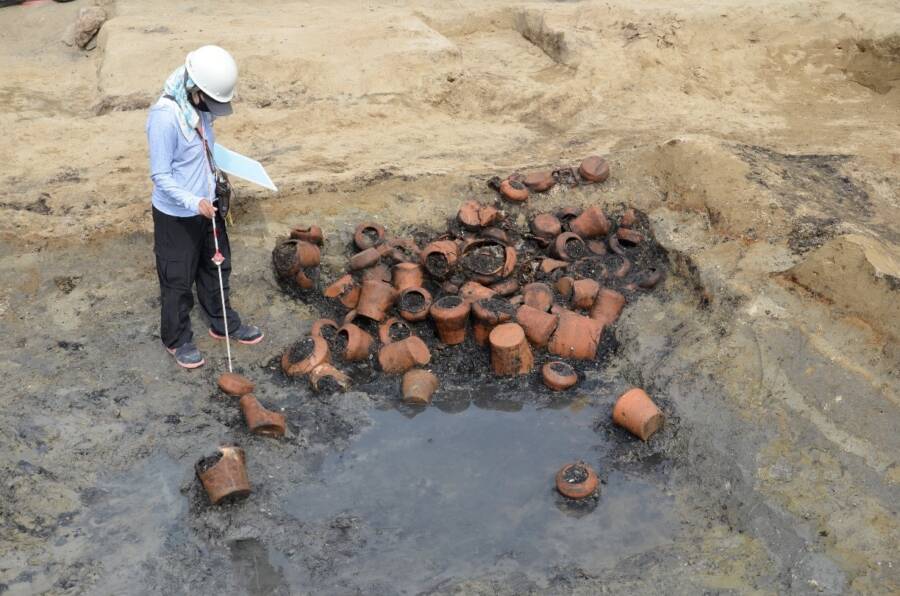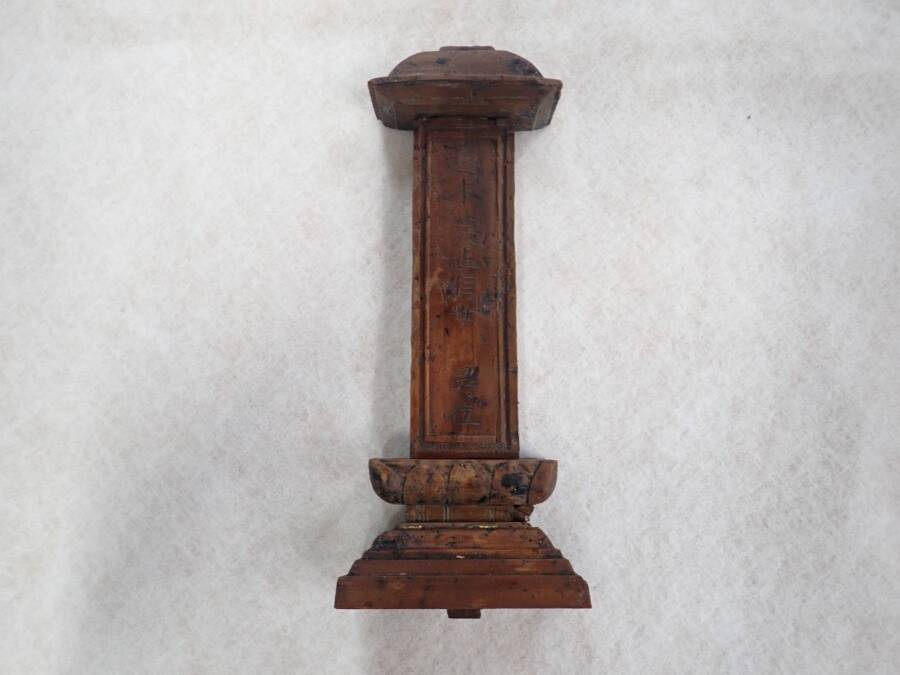The forgotten burial ground was discovered at a redevelopment site where four skyscrapers are slated to be built.

Osaka City Cultural Properties AssociationOne part of the cemetery held multiple bodies in each pit, while the other had people buried in wooden coffins or in urns after cremation.
Archaeologists in Osaka, Japan have unearthed a historic cemetery containing more than 1,500 bodies. According to Fox News, excavation surveys in Osaka’s Kita Ward began in 1991 — and the remarkable Umedahaka burial grounds have been dated to the Edo period between 1603 and 1867.
As noted in the City of Osaka’s press release, the almost three-decades-long project was a joint venture between the city’s board of education the Osaka Cultural Heritage Association. As it stands, researchers are hard at work at wading through the momentous finds — of which there’s no shortage.

Osaka City Cultural Properties AssociationExcavation surveys at Osaka’s Kita Ward began in 1991, with the graveyard’s discovery a result of a local redevelopment project.
“The remains excavated, including human bones, are currently in the process of being sorted and analyzed,” the statement read. “In addition to humans, animals are also buried in the cemetery, with more than four piglets in the northern part of the cemetery and two horses in the southern part.”
“A cat bone contained in a skeleton has also been found.”

Osaka City Cultural Properties AssociationMany of the dead were buried together without personal belongings. It’s believed they died during an epidemic or a natural disaster.
According to Hyperallergic, the uncovered Umeda Grave, or Umeda Tomb, is only one of seven historic Osaka cemeteries. Situated near West Japan Railway’s Osaka Station, finding the Umedahaka burial grounds here is like unearthing a Civil War cemetery beneath Times Square.
Formally announced by the Osaka City Cultural Properties Association, the find was made during recent stages of the Umekita redevelopment. As this commercial effort calls for four skyscrapers to be built by 2024 — it’s unlikely to resume until all remains are properly gathered and reburied elsewhere.

Osaka City Cultural Properties AssociationThe unearthed stone structure remains unidentified, but has also been dated to the Edo period.
According to Archaeology, the Umedahaka burial grounds are believed to have been used for well over 200 years by those who lived near the Osaka Castle. As for the remains themselves, none of the burials in the northern part of the site contained any personal belongings.
Those who were buried without personal items were also found buried together — with multiple bodies in each spot. Researchers have since posited that these people died during an epidemic or natural disaster, though there’s yet to be clarification on that front.
Researchers believe that the remains found in the northern section belonged to less wealthy individuals and are using them to study how average citizens were buried. Meanwhile, they discovered a trove of incredible artifacts to analyze among the more formally buried dead in the southern, and likely wealthier, section of the cemetery.

Osaka City Cultural Properties AssociationMany cremated remains were discovered within funeral urns, which were found among beads, coins, pipes, plates, and more.
Not only did excavations here yield the remains of a stone structure — but beads, gold coins, pipes, miniature plates and pots, dolls, and a Buddhist mortuary tablet were also found. According to Archaeology, the dead here were buried individually in square wooden coffins and tubs or cremated and held in urns.

Osaka City Cultural Properties AssociationResearchers found a Buddhist mortuary tablet among the artifacts.
What has been confirmed is that some of the dead had suffered from syphilis and bone tumors, with scientists continuing to research these preliminary assessments. Additionally, appropriate reburials and rituals performed by Buddhist monks are to be held once the analysis ends.
Ultimately, the archaeologists and developers involved all seem to be taking measures to satisfy the human and commercial interests involved. Hopefully, further historic clarification regarding the cause of death of those buried here takes precedence over all else.
After learning about this historic graveyard, read about the Yonaguni Monument off the Japanese coast which continues to baffle experts. Then, learn about the deserted Japanese village of Nagoro where dolls replace the dead.




